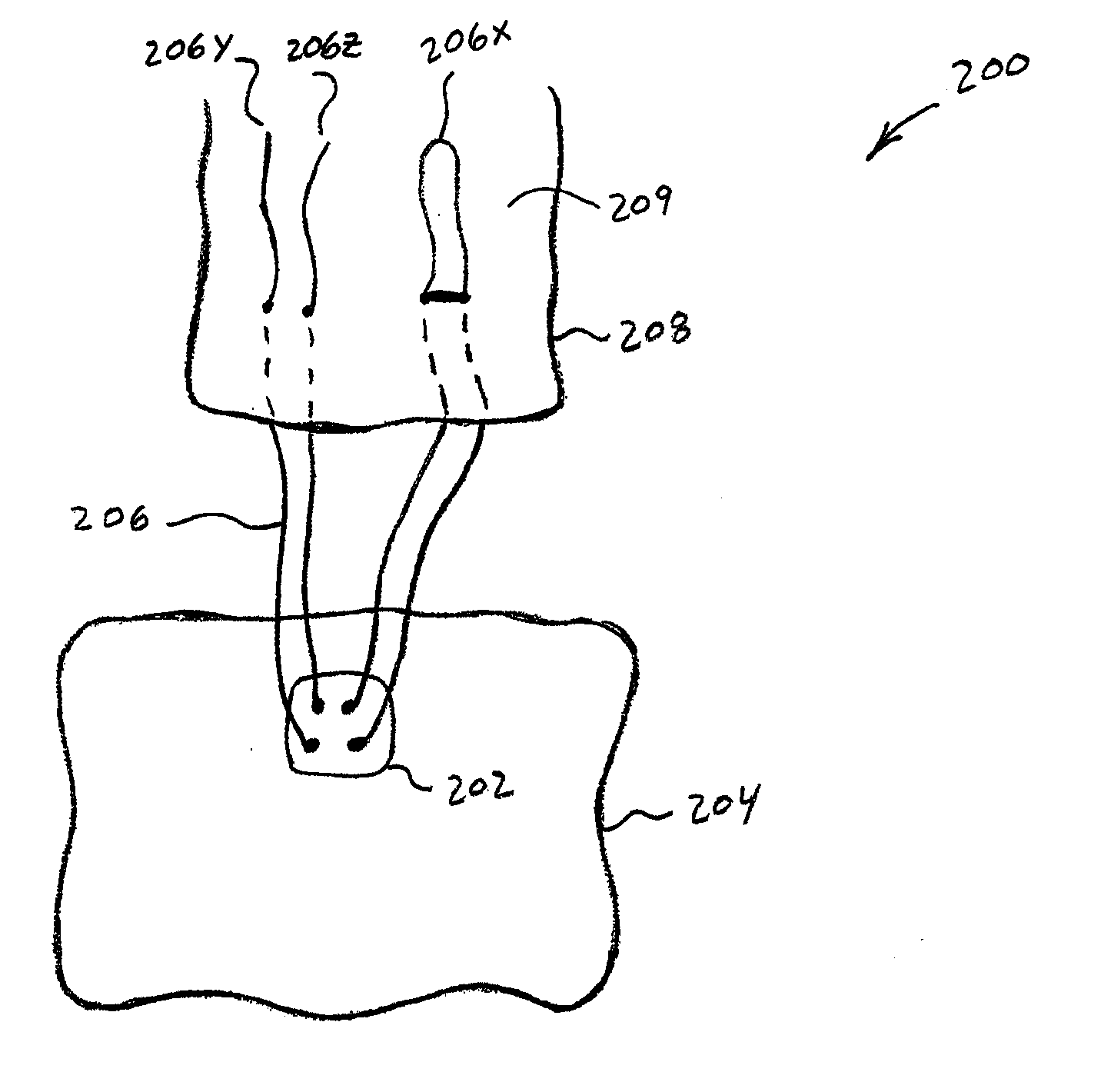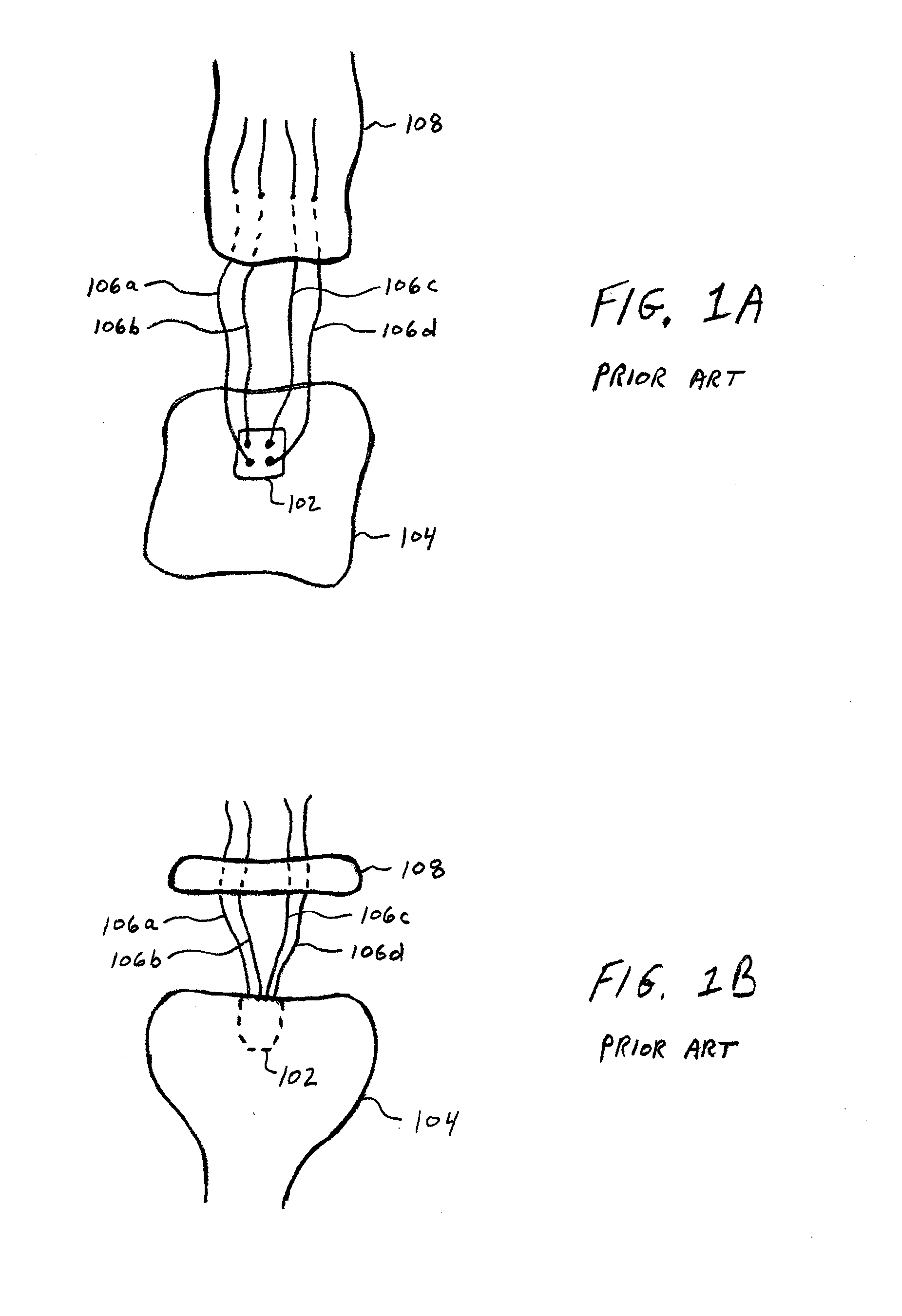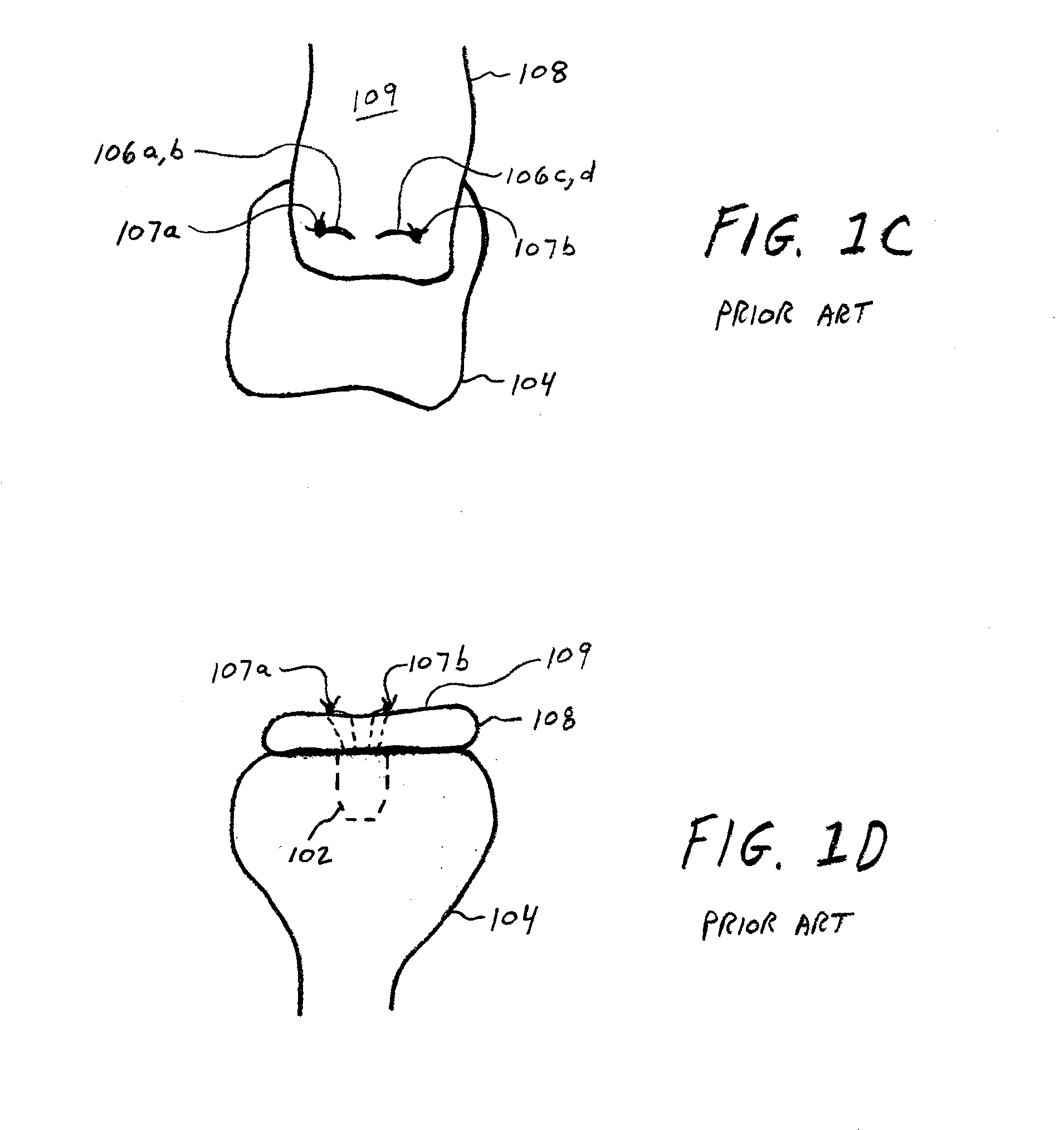Soft Tissue Fixation Using A Looped Suture Construct
a looped suture and soft tissue technology, applied in the field of surgical fixation of soft tissue, can solve the problems of tissue-suture interface, tissue separation or tear of soft tissue, failure of such surgical repairs, etc., to improve the suture's grip on the tissue, increase the likelihood of surgical success, and reduce the likelihood of suture pulling through the tissue
- Summary
- Abstract
- Description
- Claims
- Application Information
AI Technical Summary
Benefits of technology
Problems solved by technology
Method used
Image
Examples
Embodiment Construction
[0020]The invention relates to apparatus and methods of fixing soft tissue to bone that improve the tissue-grasping strength of the suture and thus the likelihood of surgical success. In particular, by forming a looped suture construct in accordance with the invention, a larger surface area of soft tissue can be grabbed by the suture, which decreases the chance of suture pull-through.
[0021]FIGS. 1A-1D illustrate generally a known method of repairing soft tissue torn or otherwise separated from bone. This method may be used in, for example, rotator cuff surgery, which may be open, mini-open, or arthroscopic. Such surgery typically involves selection of suture anchors, placement of those anchors, suture passage through the soft tissue, which in the case of rotator cuff repair is a tendon, and suture tying and / or other known suture fixation techniques. As shown in FIGS. 1A and 1B, a suture anchor 102 is implanted in a bone 104. Suture anchor 102 has suture strands 106a-d extending ther...
PUM
| Property | Measurement | Unit |
|---|---|---|
| distance | aaaaa | aaaaa |
| length | aaaaa | aaaaa |
| diameter | aaaaa | aaaaa |
Abstract
Description
Claims
Application Information
 Login to View More
Login to View More - R&D
- Intellectual Property
- Life Sciences
- Materials
- Tech Scout
- Unparalleled Data Quality
- Higher Quality Content
- 60% Fewer Hallucinations
Browse by: Latest US Patents, China's latest patents, Technical Efficacy Thesaurus, Application Domain, Technology Topic, Popular Technical Reports.
© 2025 PatSnap. All rights reserved.Legal|Privacy policy|Modern Slavery Act Transparency Statement|Sitemap|About US| Contact US: help@patsnap.com



